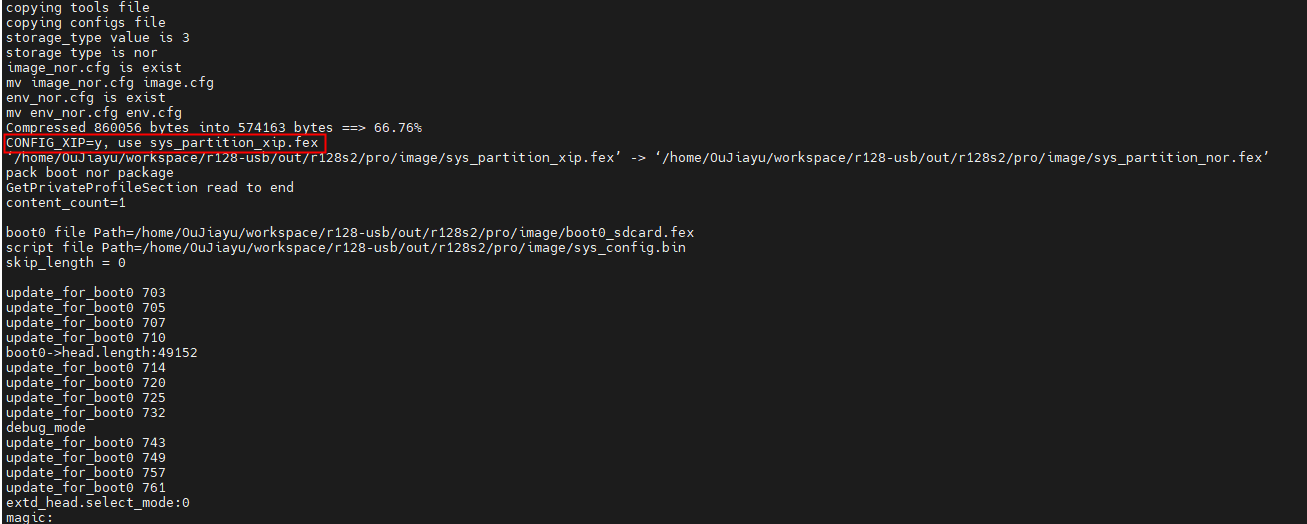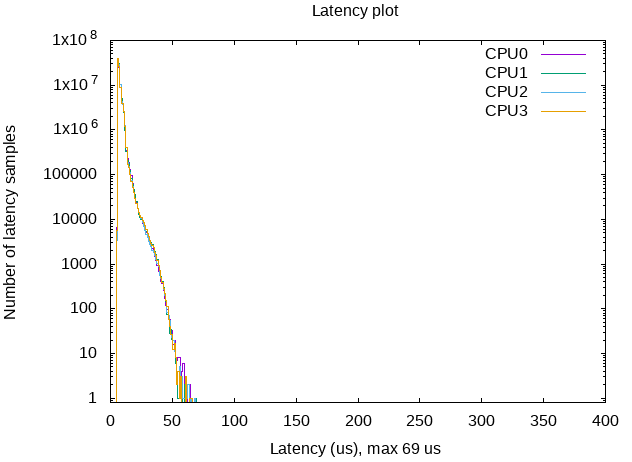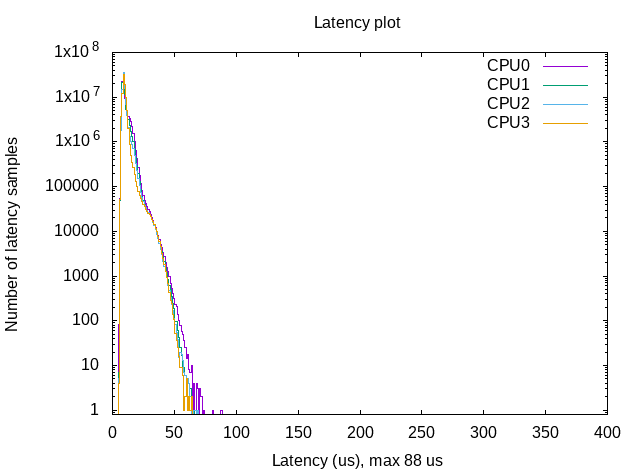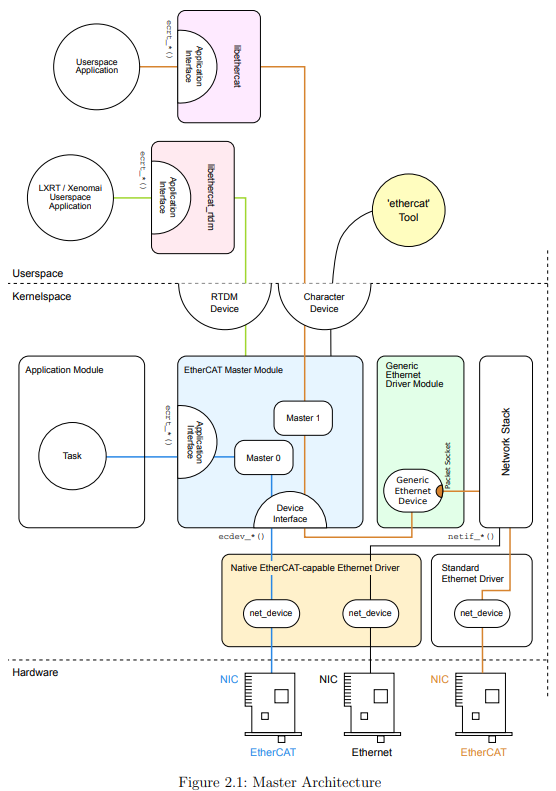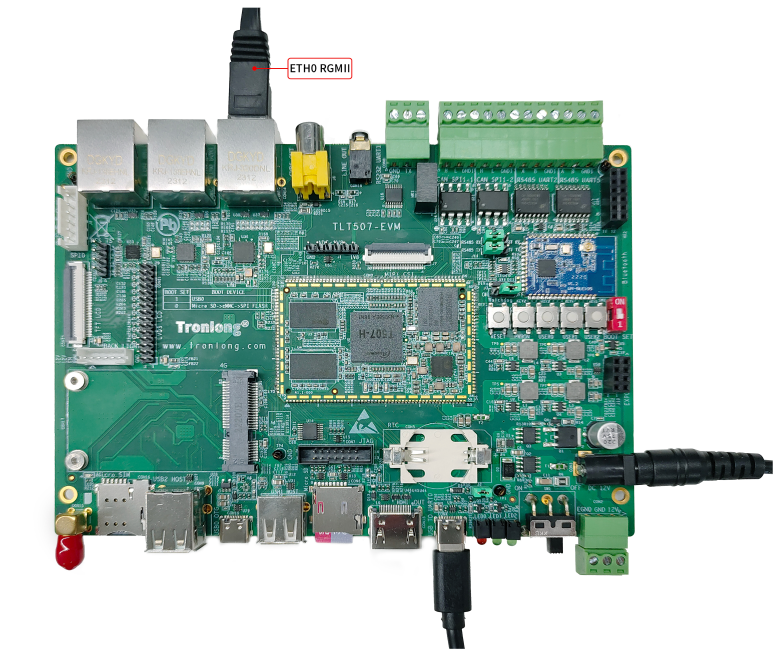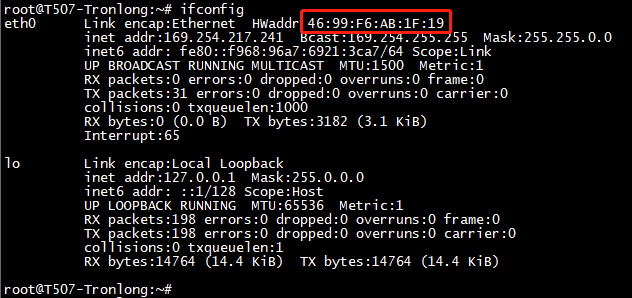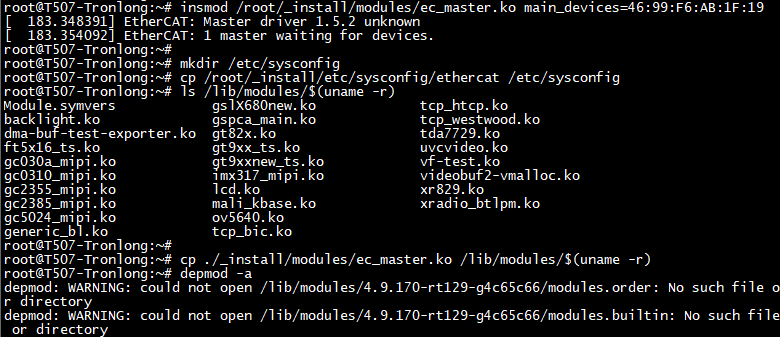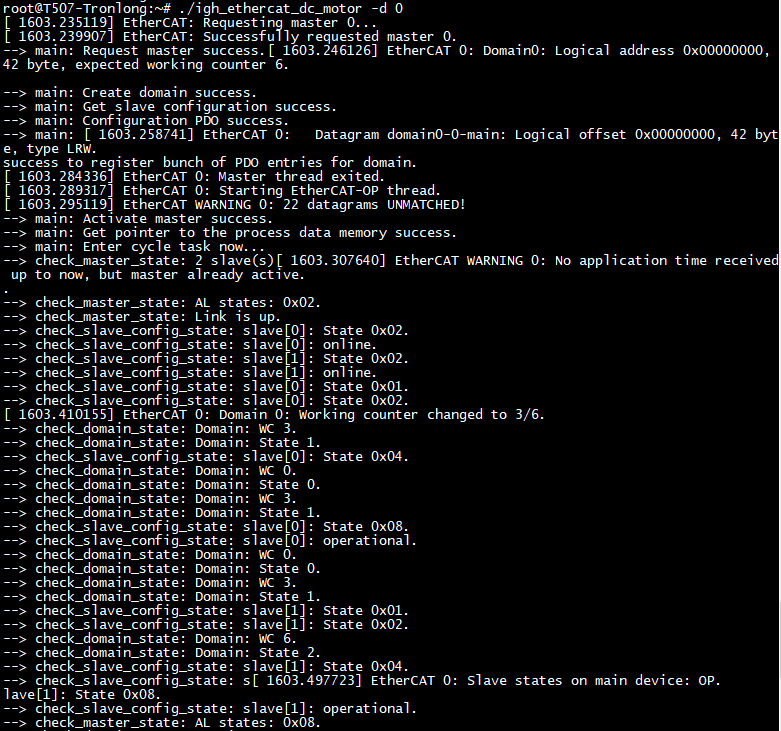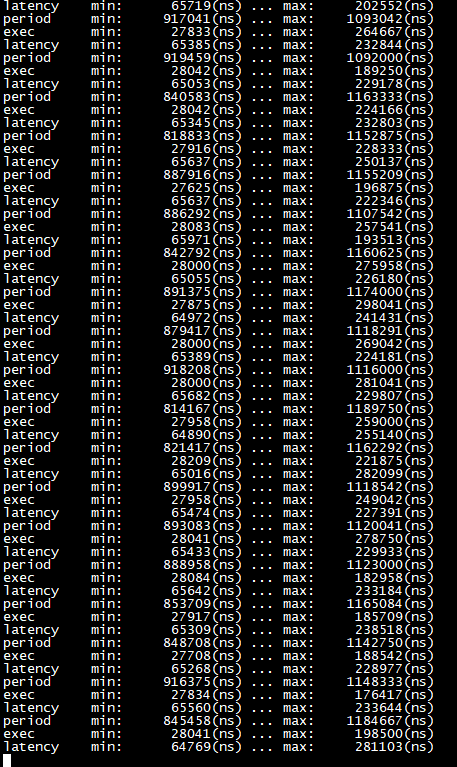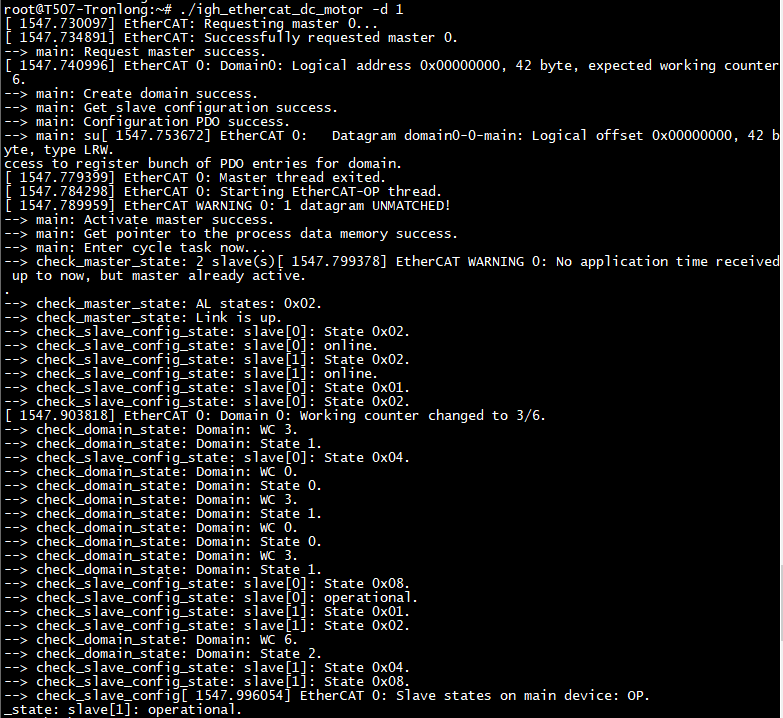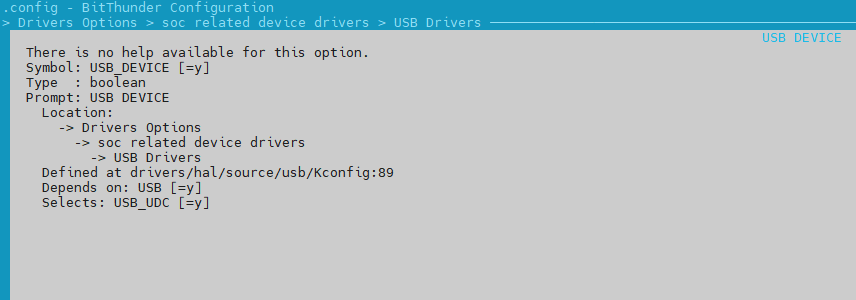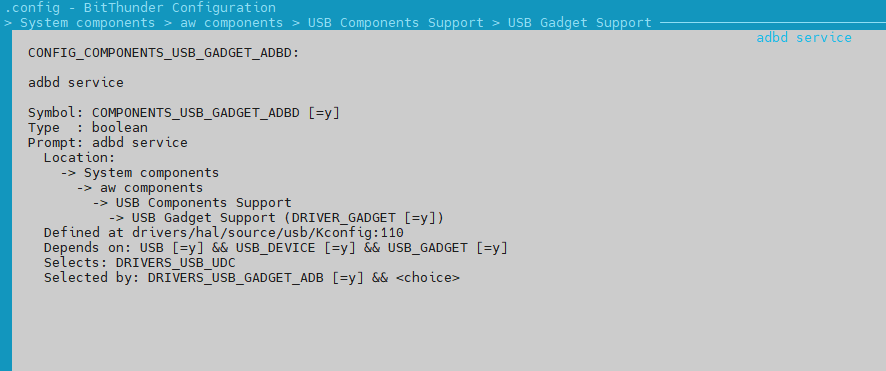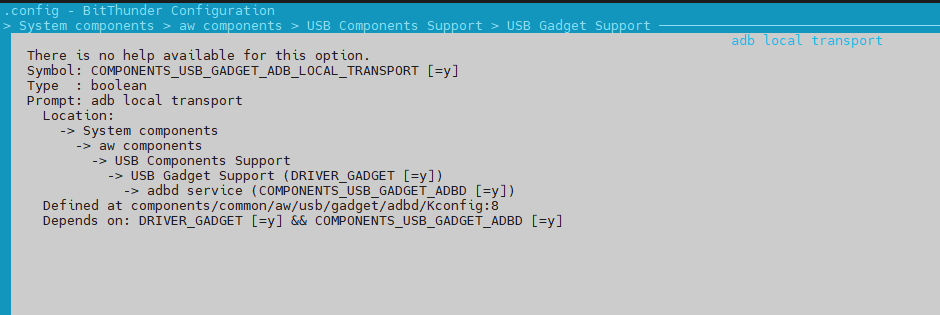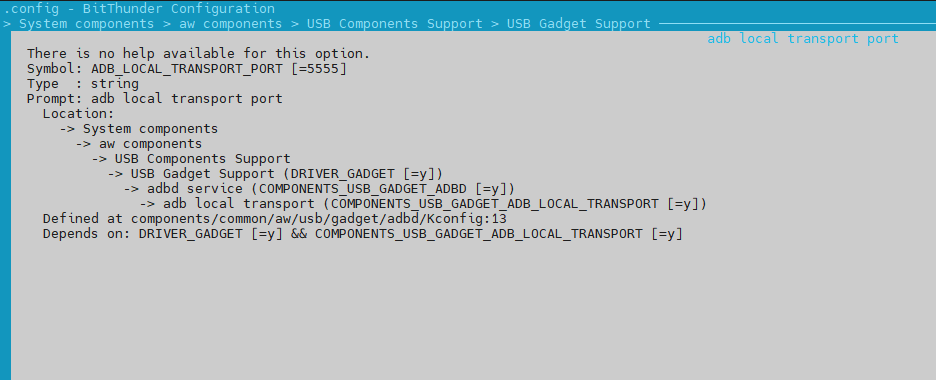如下是T113在linux下实现uart转485,patch可以参考附件,dts的配置如下:
uart1: uart@05000400 {
status = "okay";
uart1_type = <2>;
uart1_rs485=<1>;
uart1_485fl=<0>;
uart1_485oe=<&pio PG 1 1 0xffffffff 0xffffffff 0>;
};
patch如下:
diff --git a/arch/arm/boot/dts/sun8iw20p1.dtsi b/arch/arm/boot/dts/sun8iw20p1.dtsi
index 6e51b72..4d3fb29 100644
--- a/arch/arm/boot/dts/sun8iw20p1.dtsi
+++ b/arch/arm/boot/dts/sun8iw20p1.dtsi
@@ -613,8 +613,11 @@
clock-names = "uart1";
resets = <&ccu RST_BUS_UART1>;
uart1_port = <1>;
- uart1_type = <4>;
+ uart1_type = <2>;
status = "okay";
+ uart1_rs485=<1>;
+ uart1_485fl=<0>;
+ uart1_485oe=<&pio PG 1 1 0xffffffff 0xffffffff 0>;
};
uart2: uart@2500800 {
diff --git a/drivers/tty/serial/sunxi-uart.c b/drivers/tty/serial/sunxi-uart.c
index 395b1bd..f013ad2 100644
--- a/drivers/tty/serial/sunxi-uart.c
+++ b/drivers/tty/serial/sunxi-uart.c
@@ -43,6 +43,10 @@
#include <linux/of.h>
#include <linux/of_irq.h>
#include <linux/of_address.h>
+
+#include <linux/delay.h>
+#include <uapi/linux/sched/types.h>
+#include <linux/of_gpio.h>
#include "sunxi-uart.h"
#if defined(CONFIG_SERIAL_SUNXI_CONSOLE) && defined(CONFIG_MAGIC_SYSRQ)
@@ -191,6 +195,28 @@ static inline void sw_uart_disable_ier_thri(struct uart_port *port)
}
}
+
+/********************************************************************/
+/* cet,liudachuan: rs485 delayed rts release control, not used now */
+# if 0
+static enum hrtimer_restart uart_set_rs485(struct hrtimer *u_timer)
+{
+ struct sw_uart_port *sw_uport = container_of(u_timer, struct sw_uart_port, uart_timer);
+ if(sw_uport == NULL)
+ {
+ SERIAL_DBG("faile to get sw_uport\n", __func__);
+ return HRTIMER_NORESTART;
+ }
+
+ if(sw_uport->rs485_en){
+ gpio_direction_output(sw_uport->rs485oe_io.gpio, sw_uport->rs485_fl);
+ }
+
+ return HRTIMER_NORESTART;
+}
+#endif
+/***********************************************************************************/
+
static unsigned int sw_uart_handle_rx(struct sw_uart_port *sw_uport, unsigned int lsr)
{
unsigned char ch = 0;
@@ -272,23 +298,66 @@ static unsigned int sw_uart_handle_rx(struct sw_uart_port *sw_uport, unsigned in
return lsr;
}
+
+
+/******************************************************************************/
+/* cet,liudachuan: add sw-rs485 support */
+#define BITS_PER_SERIAL_BYTE 10
+#define NANOSECOND_PER_USECONDS 1000
+#define USECONDS_PER_SECOND 1000000
+static void sw_uart_rs485_cal_tout(struct uart_port *port, unsigned int lcr)
+{
+ struct sw_uart_port *sw_uport = UART_TO_SPORT(port);
+ unsigned int bits_per_byte;
+ if (lcr & SUNXI_UART_LCR_PARITY) /*有奇偶的时候,byte=start+8+parity=10*/
+ bits_per_byte = 10;
+ else /*无奇偶的时候,byte=start+8=9*/
+ bits_per_byte = 9;
+
+ if (sw_uport->baud != 0) {
+ sw_uport->tout =
+ (bits_per_byte * USECONDS_PER_SECOND) / (sw_uport->baud) * NANOSECOND_PER_USECONDS;
+ }
+ else {
+ sw_uport->tout = 0;
+ }
+}
+
static void sw_uart_stop_tx(struct uart_port *port)
{
-#if IS_ENABLED(CONFIG_SERIAL_SUNXI_DMA)
struct sw_uart_port *sw_uport = UART_TO_SPORT(port);
+
+#if IS_ENABLED(CONFIG_SERIAL_SUNXI_DMA)
struct sw_uart_dma *uart_dma = sw_uport->dma;
if (uart_dma->use_dma & TX_DMA)
sw_uart_stop_dma_tx(sw_uport);
#endif
sw_uart_disable_ier_thri(port);
+ /* cet,liudachuan: delay 1 byte transmit time then turn off rs485 tx-en */
+ if (sw_uport->rs485_en) {
+ // hrtimer_start(&sw_uport->uart_timer, sw_uport->tout, HRTIMER_MODE_REL);
+ unsigned char lsr = 0;
+ while ((lsr & SUNXI_UART_LSR_BOTH_EMPTY) != SUNXI_UART_LSR_BOTH_EMPTY) {
+ // cpu_relax();
+ udelay(10);
+ lsr = serial_in(port, SUNXI_UART_LSR);
+ };
+ gpio_direction_output(sw_uport->rs485oe_io.gpio, sw_uport->rs485_fl);
+ }
}
static void sw_uart_start_tx(struct uart_port *port)
{
-#if IS_ENABLED(CONFIG_SERIAL_SUNXI_DMA)
struct sw_uart_port *sw_uport = UART_TO_SPORT(port);
+ /* cet,liudachuan: rs485 rts = 1 */
+ // serial_out(port, sw_uport->mcr & (~SUNXI_UART_MCR_RTS), SUNXI_UART_MCR);
+ if(sw_uport->rs485_en){
+ // udelay(20);
+ gpio_direction_output(sw_uport->rs485oe_io.gpio, !sw_uport->rs485_fl);
+ }
+#if IS_ENABLED(CONFIG_SERIAL_SUNXI_DMA)
if (!((sw_uport->dma->use_dma & TX_DMA) && sw_uport->dma->tx_dma_used))
#endif
sw_uart_enable_ier_thri(port);
@@ -342,8 +411,14 @@ static void sw_uart_handle_tx(struct sw_uart_port *sw_uport)
uart_write_wakeup(&sw_uport->port);
spin_lock(&sw_uport->port.lock);
}
- if (uart_circ_empty(xmit))
- sw_uart_stop_tx(&sw_uport->port);
+
+ /* cet,liudachuan: add sw-rs485 support */
+ // if (uart_circ_empty(xmit))
+ // sw_uart_stop_tx(&sw_uport->port);
+ if (!sw_uport->rs485_en) {
+ if (uart_circ_empty(xmit))
+ sw_uart_stop_tx(&sw_uport->port);
+ }
}
static unsigned int sw_uart_modem_status(struct sw_uart_port *sw_uport)
@@ -354,7 +429,7 @@ static unsigned int sw_uart_modem_status(struct sw_uart_port *sw_uport)
sw_uport->msr_saved_flags = 0;
if (status & SUNXI_UART_MSR_ANY_DELTA && sw_uport->ier & SUNXI_UART_IER_MSI &&
- sw_uport->port.state != NULL) {
+ sw_uport->port.state != NULL) {
if (status & SUNXI_UART_MSR_TERI)
sw_uport->port.icount.rng++;
if (status & SUNXI_UART_MSR_DDSR)
@@ -724,6 +799,25 @@ static enum hrtimer_restart sw_uart_report_dma_rx(struct hrtimer *rx_hrtimer)
#endif
+
+
+/**
+ * 串口中断实测14-135us,数据发完后gic_handle_irq两次进入中断,第二次才真正进入串口中断,导致整个延迟变大
+ * 通过提高中断线程优先级为4以上,可以解决,时间缩短到(-5-35us),这里优先级设置为1
+ * cet,ljt 2021.10
+*/
+static inline void sw_uart_irq_set_pri(struct sw_uart_port *sw_uport)
+{
+ struct sched_param param = { .sched_priority = MAX_USER_RT_PRIO - 2 };
+ if (sw_uport->irq_pri_promoted)
+ return;
+ if (sched_setscheduler(current, SCHED_FIFO, ¶m) < 0)
+ {
+ SERIAL_MSG("sched_setscheduler set error\n");
+ }
+ sw_uport->irq_pri_promoted = 1;
+}
+
static irqreturn_t sw_uart_irq(int irq, void *dev_id)
{
struct uart_port *port = dev_id;
@@ -731,6 +825,9 @@ static irqreturn_t sw_uart_irq(int irq, void *dev_id)
unsigned int iir = 0, lsr = 0;
unsigned long flags;
+ /* if we hasn't promote the irq priority, set priority to 97 */
+ //sw_uart_irq_set_pri(sw_uport);
+
spin_lock_irqsave(&port->lock, flags);
iir = serial_in(port, SUNXI_UART_IIR) & SUNXI_UART_IIR_IID_MASK;
@@ -1072,7 +1169,7 @@ static void sw_uart_flush_buffer(struct uart_port *port)
}
static void sw_uart_set_termios(struct uart_port *port, struct ktermios *termios,
- struct ktermios *old)
+ struct ktermios *old)
{
struct sw_uart_port *sw_uport = UART_TO_SPORT(port);
unsigned long flags;
@@ -1119,6 +1216,12 @@ static void sw_uart_set_termios(struct uart_port *port, struct ktermios *termios
dlh = quot >> 8;
SERIAL_DBG("set baudrate %d, quot %d\n", baud, quot);
+ /* cet,liudachuan: add sw rs485 support */
+ sw_uport->baud = baud;
+ if (sw_uport->rs485_en) {
+ sw_uart_rs485_cal_tout(port, lcr);
+ }
+
spin_lock_irqsave(&port->lock, flags);
uart_update_timeout(port, termios->c_cflag, baud);
@@ -1379,7 +1482,7 @@ static int sw_uart_ioctl(struct uart_port *port, unsigned int cmd,
}
static void sw_uart_pm(struct uart_port *port, unsigned int state,
- unsigned int oldstate)
+ unsigned int oldstate)
{
#if IS_ENABLED(CONFIG_EVB_PLATFORM)
int ret;
@@ -1727,7 +1830,7 @@ static void sw_console_putchar(struct uart_port *port, int c)
}
static void sw_console_write(struct console *co, const char *s,
- unsigned int count)
+ unsigned int count)
{
struct uart_port *port = NULL;
struct sw_uart_port *sw_uport;
@@ -1909,6 +2012,9 @@ static int sw_uart_probe(struct platform_device *pdev)
char uart_para[16] = {0};
const char *uart_string;
int ret = -1;
+ int rs485_en = 0; //2020.09.24 2¨??? ¨?¨a?¨?RS485????
+ int rs485_fl = 0;
+
struct device_node *apk_np = of_find_node_by_name(NULL, "auto_print");
const char *apk_sta = NULL;
#if IS_ENABLED(CONFIG_SERIAL_SUNXI_DMA)
@@ -2052,6 +2158,45 @@ static int sw_uart_probe(struct platform_device *pdev)
else
sw_uport->card_print = false;
+ /* cet,liudachuan: add sw-rs485 support */
+ /************ Modify by wangshunfan @2021.01.11 for this part *************/
+ /* Get rs485 enable flag */
+ snprintf(uart_para, sizeof(uart_para), "uart%d_rs485", pdev->id);
+ ret = of_property_read_u32(np, uart_para, &rs485_en);
+ if (ret) {
+ SERIAL_MSG("error to get uart%d_rs485\n", pdev->id);
+ rs485_en = 0;
+ }
+ sw_uport->rs485_en = rs485_en;
+
+ //SERIAL_DBG("caid rs485_en = %d port = %d", rs485_en, pdev->id);
+ if (sw_uport->rs485_en) {
+ snprintf(uart_para, sizeof(uart_para), "uart%d_485fl", pdev->id);
+ ret = of_property_read_u32(np, uart_para, &rs485_fl);
+ if (ret) {
+ SERIAL_MSG("error to get tuart%d_rs485\n", pdev->id);
+ rs485_fl = 0;
+ }
+ sw_uport->rs485_fl = rs485_fl;
+
+ /* Get rs485 enable control pin, request and init gpio */
+ snprintf(uart_para, sizeof(uart_para), "uart%d_485oe", pdev->id);
+ sw_uport->rs485oe_io.gpio = of_get_named_gpio_flags(np, uart_para, 0,
+ (enum of_gpio_flags *)(&(sw_uport->rs485oe_io)));
+ if (gpio_is_valid(sw_uport->rs485oe_io.gpio)){
+ gpio_request(sw_uport->rs485oe_io.gpio, NULL);
+ gpio_direction_output(sw_uport->rs485oe_io.gpio, sw_uport->rs485_fl);
+ }
+
+ /* Init hrtimer for rs485 and set timeout callback function */
+ // hrtimer_init(&sw_uport->uart_timer, CLOCK_MONOTONIC, HRTIMER_MODE_REL);
+ // sw_uport->uart_timer.function = uart_set_rs485;
+
+ sw_uport->irq_pri_promoted = 0;
+ SERIAL_MSG("uart%d rs485 enabled\n", pdev->id);
+ }
+ /**************** end of modify by wangshunfan for this part ****************/
+
pdata->used = 1;
port->iotype = UPIO_MEM;
port->type = PORT_SUNXI;
@@ -2129,7 +2274,14 @@ static int sw_uart_remove(struct platform_device *pdev)
struct sw_uart_port *sw_uport = platform_get_drvdata(pdev);
SERIAL_DBG("release uart%d port\n", sw_uport->id);
-#if IS_ENABLED(CONFIG_SERIAL_SUNXI_DMA)
+
+ /* cet,liudachuan: add sw-rs485 support */
+ if (sw_uport->rs485_en) {
+ gpio_free(sw_uport->rs485oe_io.gpio); /* free gpio of rs485 */
+ // hrtimer_cancel(&sw_uport->uart_timer); /* canel hrtimer */
+ }
+
+#ifdef CONFIG_SERIAL_SUNXI_DMA
sw_uart_release_dma_tx(sw_uport);
sw_uart_release_dma_rx(sw_uport);
#endif
diff --git a/drivers/tty/serial/sunxi-uart.h b/drivers/tty/serial/sunxi-uart.h
index 565acbf..ab096d6 100644
--- a/drivers/tty/serial/sunxi-uart.h
+++ b/drivers/tty/serial/sunxi-uart.h
@@ -22,6 +22,8 @@
#include <linux/dmaengine.h>
#include <linux/reset.h>
//include <linux/serial_core.h>
+#include <linux/ktime.h>
+#include <linux/sunxi-gpio.h>
/* SUNXI UART PORT definition*/
#define PORT_MAX_USED PORT_LINFLEXUART /* see include/uapi/linux/serial_core.h */
@@ -106,6 +108,16 @@ struct sw_uart_port {
struct serial_rs485 rs485conf;
bool card_print;
bool throttled;
+
+ /* cet,liudachuan: add rs485 support(not hardware's rs485) */
+ struct gpio_config rs485oe_io;
+ unsigned int rs485_en;
+ unsigned int rs485_fl;
+ struct hrtimer uart_timer;
+ unsigned int baud;
+ int irq_pri_promoted;
+ /* Added by wangshunfan @2021.01.11 for hrtimer timeout */
+ ktime_t tout;
};
/* register offset define */
@@ -191,6 +203,8 @@ struct sw_uart_port {
#define SUNXI_UART_LSR_OE (BIT(1))
#define SUNXI_UART_LSR_DR (BIT(0))
#define SUNXI_UART_LSR_BRK_ERROR_BITS 0x1E /* BI, FE, PE, OE bits */
+/* cet,liudachuan: add BOTH_EMPTY macro */
+#define SUNXI_UART_LSR_BOTH_EMPTY (SUNXI_UART_LSR_TEMT | SUNXI_UART_LSR_THRE)
/* Modem Status Register */
#define SUNXI_UART_MSR_DCD (BIT(7))
#define SUNXI_UART_MSR_RI (BIT(6))
